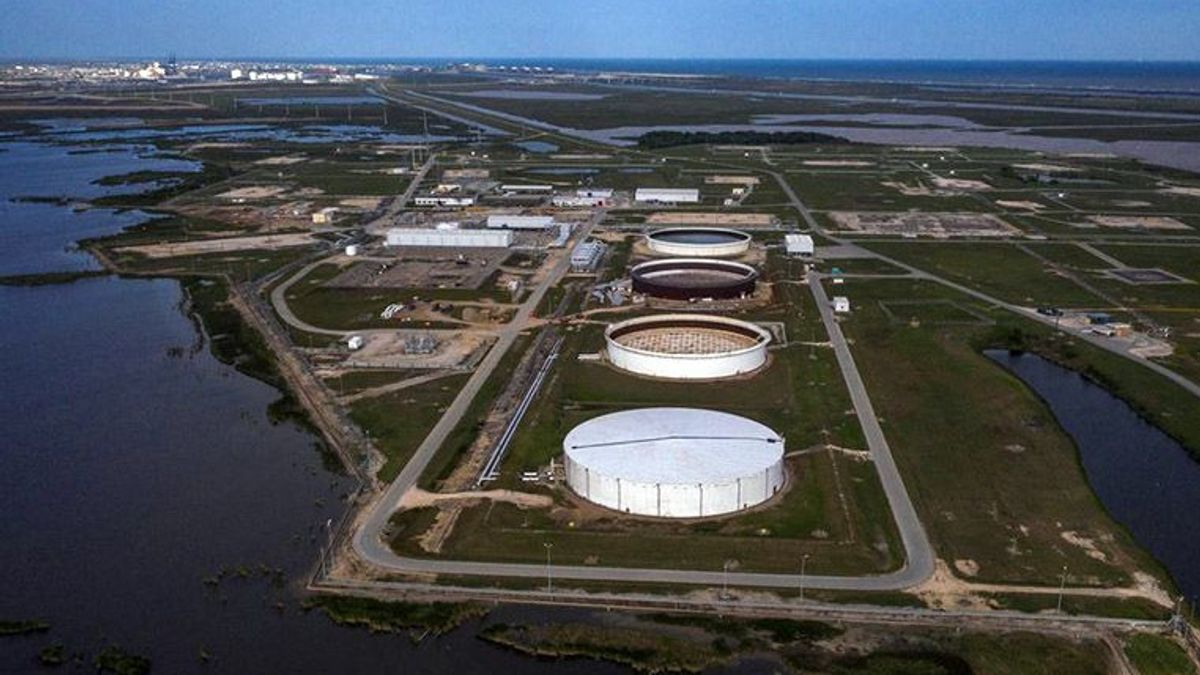JAKARTA - Oil rose in late trading Friday (Saturday July 16, WIB), after a US official said that an increase in Saudi oil production was not expected, and as investors questioned whether OPEC had room to significantly increase their crude production.
Quoted from Antara, Brent crude futures for September delivery rose 2.06 dollars, or 2.1 percent, to settle at 101.16 dollars per barrel. West Texas Intermediate (WTI) crude futures rose 1.81 dollars, or 1.9 percent, to settle at 97.59 dollars per barrel.
Both benchmark contracts saw their biggest weekly percentage declines in about a month, largely on concerns earlier this week that an imminent recession would cut demand. Brent lost 5.5 percent in its third weekly decline, while WTI fell 6.9 percent in its second weekly decline.
The comments during US President Joe Biden's visit to the Middle East come at a time when spare capacity at members of the Organization of the Petroleum Exporting Countries (OPEC) is running low.
"Part of the support is that everyone and their brethren who are digging into the Saudi situation see that they don't have much capacity left," said John Kilduff, partner at Again Capital LLC in New York.
Biden, driven by energy and security interests, arrived in Jeddah on Friday July 15 and is expected to ask Saudi Arabia to pump more oil.
But the United States does not expect Saudi Arabia to immediately increase oil output and is eyeing the outcome of the next OPEC+ meeting on Aug. 3, a US official told Reuters.
"If the market was expecting an announcement between President Biden and (Saudi Crown Prince) Mohammed Bin Salman that oil production would be increased, they were very disappointed," said Andrew Lipow of Lipow Oil Associates in Houston.
"But I think in the coming weeks, especially at the upcoming OPEC meeting, we might see an increase in production from Saudi Arabia and the United Arab Emirates."
The United States can still secure a commitment that OPEC will increase production in the next few months in the hope of signaling to markets that supply is coming if needed.
Meanwhile, the U.S. oil rig count, an early indicator of future production, edged up two rigs to 599 rigs this week to the highest level since March 2020, energy services firm Baker Hughes Co. said.
Also signaling more oil supplies in the near future was Libya's oil chief, who said crude production would resume after a meeting of groups that have blockaded the country's oil facilities for months.
The lifting of force majeure on production could mean a return of 850,000 barrels per day.
On the economic front, the most hawkish U.S. Federal Reserve policymakers on Thursday July 14 said they favored a 75 basis point rate hike at this month's policy meeting, not the bigger hikes traders had expected after a report on Wednesday July 13 showed inflation was picking up. fast.
Concerns that the Fed may opt for a full 100 basis point rate hike this month and weak economic data have caused Brent and WTI to drop more than $5 on Thursday (14/7/2022) below their closing price on February 23, the day before Russia invaded Ukraine, although both contracts erased almost all losses by the end of the session.
But analysts expect continued pressure on oil from concerns over the global economy.
"Brent has fallen markedly below $100 a barrel this week. It is likely to continue to slide given recession fears may not subside for now," Commerzbank said in a note.
The bear market sentiment also follows the new COVID-19 outbreak in China, which has hampered the recovery in demand.
China's refinery throughput in June shrank nearly 10 percent from a year earlier, with production for the first half of the year falling 6.0 percent in the first annual decline for the period since at least 2011, data showed on Friday July 15.
The English, Chinese, Japanese, Arabic, and French versions are automatically generated by the AI. So there may still be inaccuracies in translating, please always see Indonesian as our main language. (system supported by DigitalSiber.id)













